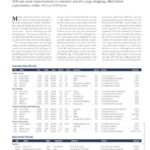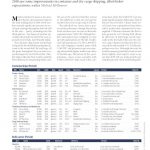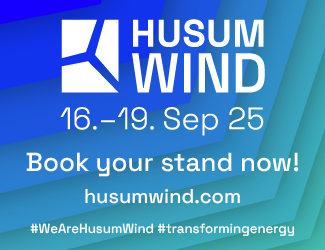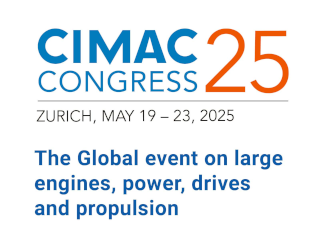2018 saw some improvements in container and dry cargo shipping, albeit below expectations, writes Michael Hollmann
Market sentiment is more or less muted in the dry and container trades in the final trading days of 2018[ds_preview]. Both markets enjoyed significant increases in vessel spot earnings throughout the first half of the year – partly extending into the third quarter – but hopes of another upward push towards the end of the year, especially in dry bulk, were brutally failed.
The container ship charter market kept rising in the first half before going into descent in the second half. By and large, all the gains throughout the year have evaporated again by end of December. Market indices like the New ConTex and the Howe Robinson Containership Index close the year at the same level that they started at. The difference is that one year ago the market’s direction was up, today it is down.
The individual size classes show a pretty varied performance, though. Period rate levels are down year-on-year in the feeder segments below 2,000TEU although brokers and analysts have struggled to come up with explanations for the lull. Traditional sub-panamaxes of 2,500-2,800TEU are still clinging to modest gains while 3,500TEU and panamax types are enjoying substantially higher market rates than 12 months ago. The picture in the »post-panamax« classes is just as patchy, with 5,500-6,500TEU ships faced with a deterioration while the 8,500TEU type has made significant gains following a rash of fixtures since October. Clearly, some vessel classes were coping better than others with a market that continued to be oversupplied. Clarksons estimates the fleet to have grown by 5.8% during 2018, driven by deliveries of ultra-large vessels especially in the first half of the year. By contrast, cargo volumes are believed to have increased by only around 4.5% (Clarksons), perhaps even less. Although forecasts for world economic growth have been revised down slightly, most experts seem to agree that 2019 will see trade growth outstrip fleet growth. With newbuilding deliveries expected to slow from 1.4mill. t to 1.0mill.t, fleet capacity growth may moderate to just around 3.0% versus 4.0+ % global trade growth. This would suggest that charter market rates could climb to much higher levels than in 2018 as liner operators will be forced to take on even more charter capacity to cope with increased business volumes.
Some believe that the recent strengthening in short term period rates for 8,500TEU ships to around 17,000$/day may be an early indicator for an upswing this year. Brokers already recorded plenty of forward enquiry for ships delivering in spring. CMA CGM even fixed two Hanjin 6900 type ships for 60-month periods at rates close to 26,000$/day with laycan dates in April. Currently, tonnage in the bigger market sectors is already pretty scarce, with only one vessel in spot position in the 5,300-7,499 and the 7,500-11,000TEU segments each at the start of December. If there is a burst of activity in February just after Chinese New Year, tonnage availability could quickly dry up, sending rates soaring.
There is no doubt that it will be the most efficient vessels reaping the greatest gains. Recent debates at the HANSA Forum showed that charter market players generally expect the spread in rates between old and modern tonnage to widen, as speed/consumption profiles gain maximum attention again. With the transition to more costly low-sulphur fuels starting this year, charterers will clearly favour the most-efficient vessels.
Dry bulk missing China boost
In the dry cargo sector, there is a heightened degree of uncertainty as the new year dawns. The fourth quarter turned out to be a disaster, with average rates for capesize vessels falling plunging below 8,000$/day before recovering to around 17,000$/day by mid-December. Panamaxes and smaller geared bulkers recorded a softening, too, though relatively modest by comparison. Average time charter levels for ships from 28,000 dwt to 82,000 dwt are clustered between 9,000 and 13,000$/day as this issue of HANSA goes to press. It appears that a simultaneous slowdown in demand for all the main commodities (iron ore, coal, grain) in China caused the markets to go into decline. There is no one explanation, though. Iron ore and coal imports are feeling the impact of winter curtailment and anti-pollution measures in China while grain importation was restrained by the trade war with the US. The recent standstill agreement on tariffs between Washington and Beijing brought back a bit of optimism, though, especially for panamaxes, supramaxes and handies. Reports say that China has resumed buying soya beans in the US, with up to 8mill. t potentially coming up for shipment in the near to medium term. It would mean significant new business for smaller bulkers. Already, rates for trips ex US Gulf to China and for transpacific trips have begun to firm up.
Overall, market sentiment in dry bulk shipping is still shaken, though. Looking at price levels for freight futures reveals that market participants currently anticipate a sideways trend in spot earnings next year. Average time charter rates for 2019 were quoted at around 15,800 $/day versus a 2018 average of 16,500 $ in the capesize sector, 11,800 versus 11,650 $ for panamaxes, 11,700 versus 11,500 $ for supramaxes and 9,100 versus 8,700 $ for 28,000 dwt handysize bulkers.
The European shortsea dry cargo trades had a more successful fourth quarter, with freight rates and vessel earnings climbing well above levels back in Q3. The seasonal hike was not as pronounced as in 2017, though. The HC shortsea index averaged 18.22 in November/December versus 19.12 one year back. Shipbroker Norbroker assessed average spot earnings for 3,500 dwt ships at 2,850 €/d in mid-December, against 3,450 €at the end of 2017.
Michael Hollmann

















